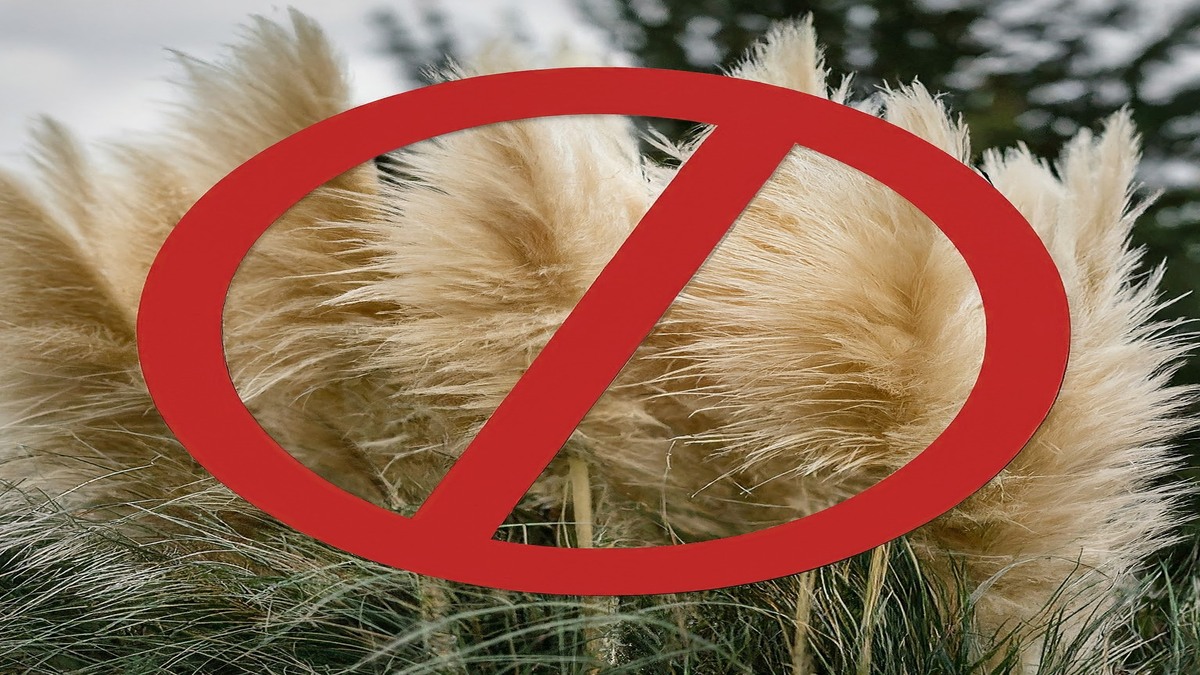Introduction
Why is selling pampas grass illegal? This question might seem surprising, especially considering the plant’s popularity in home decor and landscaping. However, the reality behind the ban on selling pampas grass is rooted in significant environmental and ecological concerns. In this article, we will delve into the reasons why pampas grass is considered problematic, explore the legal restrictions surrounding it, and provide alternatives for those who love its aesthetic appeal.
What is Pampas Grass?
Pampas grass (Cortaderia selloana) is a tall, perennial plant native to South America. It is known for its impressive, feathery plumes that can reach up to 10 feet in height. Due to its striking appearance, pampas grass has become a popular ornamental plant in gardens and floral arrangements. However, its beauty hides a darker side that has led to its ban in several regions.
Why is Selling Pampas Grass Illegal?
Environmental Impact
Pampas grass is classified as an invasive species in many parts of the world. Its ability to grow rapidly and spread aggressively allows it to outcompete native plants. This leads to a reduction in biodiversity, as the dense clumps of pampas grass can dominate landscapes, displacing native flora and fauna. The plant’s extensive root system can also alter soil composition and water availability, further impacting local ecosystems.
Legal Restrictions
Due to its invasive nature, several regions have implemented legal restrictions on the sale and cultivation of pampas grass. These laws are designed to prevent its spread and protect native ecosystems. For example, in states like California and Hawaii, selling or planting pampas grass is illegal without a special permit. The penalties for violating these regulations can include fines and mandatory removal of the plants.
The Spread of Invasive Species
The introduction of non-native species like pampas grass can have catastrophic effects on local ecosystems. Invasive species often lack natural predators in their new environments, allowing them to proliferate unchecked. This can lead to a cascade of ecological impacts, such as the loss of native species, changes in habitat structure, and disruptions to food webs.
Case Studies: Regions with Pampas Grass Bans
California
In California, pampas grass is a well-known invasive species that has spread along the coast and inland areas. The plant’s ability to thrive in a variety of conditions has made it a significant threat to local biodiversity. As a result, the state has imposed strict regulations on its sale and distribution.
Hawaii
Hawaii faces similar challenges with pampas grass. The state’s unique ecosystems are particularly vulnerable to invasive species, and pampas grass has been identified as a major threat. To combat this, Hawaii has enacted laws that prohibit the importation, sale, and planting of pampas grass.
Alternatives to Pampas Grass
For those who appreciate the look of pampas grass but want to avoid its environmental impact, there are several alternatives to consider:
- Native Grasses: Opt for native grasses that provide similar aesthetic appeal without the risk of invasiveness. Examples include switchgrass (Panicum virgatum) and little bluestem (Schizachyrium scoparium).
- Ornamental Grasses: Non-invasive ornamental grasses, such as fountain grass (Pennisetum alopecuroides), can be a beautiful and eco-friendly alternative.
- Dried Flowers: For indoor decor, consider using dried flowers like wheat stalks or lavender, which offer a rustic charm without environmental concerns.
Conclusion
Understanding why selling pampas grass is illegal involves recognizing its significant environmental impact and the legal measures in place to control its spread. While pampas grass may be visually appealing, its potential to harm native ecosystems cannot be overlooked. By choosing sustainable alternatives, we can enjoy beautiful landscapes and decor without contributing to the problem of invasive species.
FAQs
1. What makes pampas grass illegal to sell in certain areas?
Pampas grass is considered an invasive species in many regions. It spreads rapidly and displaces native plants, leading to reduced biodiversity and altered ecosystems. Laws prohibiting its sale aim to prevent these negative environmental impacts.
2. In which areas is selling pampas grass illegal?
Selling pampas grass is illegal in several states and regions, including California and Hawaii, where its invasive nature poses significant threats to local ecosystems. Specific regulations vary by location.
3. What are the penalties for selling pampas grass illegally?
Penalties for selling pampas grass illegally can include fines, mandatory removal of the plants, and other legal actions depending on local regulations.
4. How does pampas grass impact the environment?
Pampas grass outcompetes native plants, reduces biodiversity, and alters soil composition and water availability. Its dense growth can also change the structure of habitats, negatively affecting local wildlife.



Pingback: Why are pampas so expensive? – graasy.com